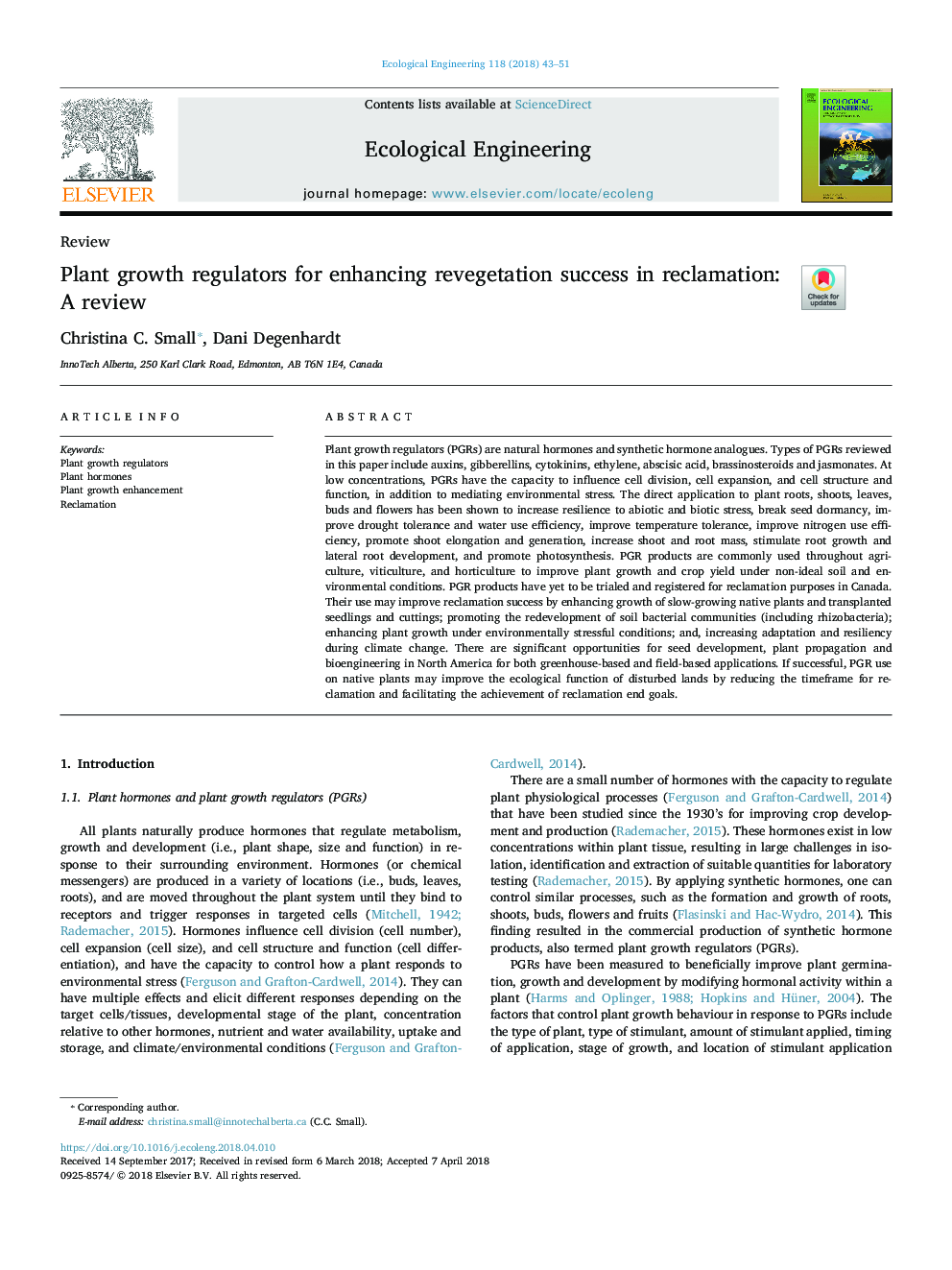| Article ID | Journal | Published Year | Pages | File Type |
|---|---|---|---|---|
| 8847811 | Ecological Engineering | 2018 | 9 Pages |
Abstract
Plant growth regulators (PGRs) are natural hormones and synthetic hormone analogues. Types of PGRs reviewed in this paper include auxins, gibberellins, cytokinins, ethylene, abscisic acid, brassinosteroids and jasmonates. At low concentrations, PGRs have the capacity to influence cell division, cell expansion, and cell structure and function, in addition to mediating environmental stress. The direct application to plant roots, shoots, leaves, buds and flowers has been shown to increase resilience to abiotic and biotic stress, break seed dormancy, improve drought tolerance and water use efficiency, improve temperature tolerance, improve nitrogen use efficiency, promote shoot elongation and generation, increase shoot and root mass, stimulate root growth and lateral root development, and promote photosynthesis. PGR products are commonly used throughout agriculture, viticulture, and horticulture to improve plant growth and crop yield under non-ideal soil and environmental conditions. PGR products have yet to be trialed and registered for reclamation purposes in Canada. Their use may improve reclamation success by enhancing growth of slow-growing native plants and transplanted seedlings and cuttings; promoting the redevelopment of soil bacterial communities (including rhizobacteria); enhancing plant growth under environmentally stressful conditions; and, increasing adaptation and resiliency during climate change. There are significant opportunities for seed development, plant propagation and bioengineering in North America for both greenhouse-based and field-based applications. If successful, PGR use on native plants may improve the ecological function of disturbed lands by reducing the timeframe for reclamation and facilitating the achievement of reclamation end goals.
Related Topics
Life Sciences
Agricultural and Biological Sciences
Ecology, Evolution, Behavior and Systematics
Authors
Christina C. Small, Dani Degenhardt,
